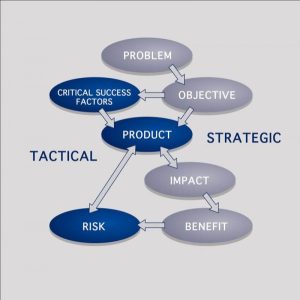Of all the contributors to project success, the one overwhelming factor is ‘clarity’: Clarity about what the project is to achieve; clarity about what success looks like; clarity about value to the stakeholders; clarity about who the stakeholders are, and certainty about the risks that may be encountered.

Most project methods are aware of this, and many provide documents and approaches in recognition of it, but though clever they are often not clear, and often contribute to the confusion. CITI’s mission model, used since 1992 and identified by thousands of project and business managers as the major contributor to the successful delivery of change.
By creating and relating seven distinct perspectives, the mission model – called by many the ‘hourglass’ – allows each to be identified with great clarity. There is no longer the temptation or the need to include products and scoping statements in the objective; benefits and the problem statement are clearly distinguished one from another, and risks are always and intimately linked with the initiative.
It is impossible to prevent discussions on what would count as a solution during a project initiation workshop, nor stop worries, perceived threats and constraints from inhibiting analysis. The hourglass, however, allows for this tendency, and, by giving ‘safe parking’ for ideas and fears, and by encouraging a dynamic and iterative analysis of the purpose, value and scope of a project, the right people are able to engage with the crucial right-hand items, the problem, the objective and the benefits before settling on what the project will deliver.
The perspectives are linked by arrows, which graphically suggest how the elements are interrelated; Linking the products to impacts validates the scope; mapping the scope to the objective proves the consistency and coherence of the solution; and by deriving the critical success factors directly from the objective establishes two-way confidence in the ‘rightness’ of the project strategy. Each perspective thus contributes to a powerful self-righting vision of what needs to be achieved to make the project and the change a success.


Hi you have a cool website It was very easy to post fantastic
LikeLike
Many thanks Duane
LikeLike